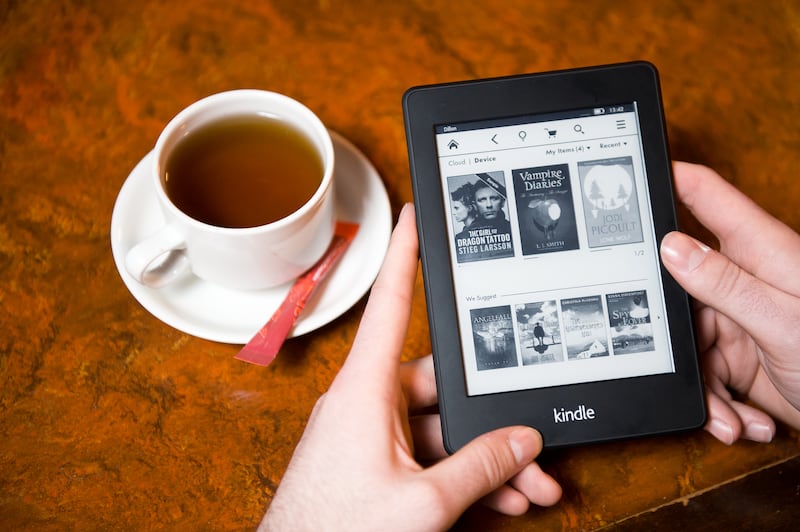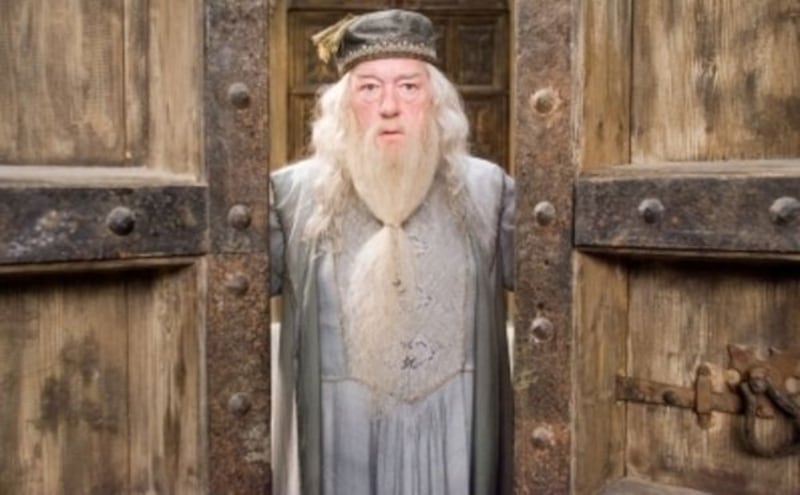First things first: in 50 years there will probably still be paper. There will be “books”. There will be stories pressed into pages that can be turned, thumbed, their corners turned down, vulnerable to drink spills and tears and being borrowed never to be seen again.
It’s worth saying only because, not too long ago, it wasn’t certain that the physical book as a popular medium would survive another 20 years, let alone 50.
Just as it was with music, movies and news, digital was the future of the book. An ever-expanding array of e-readers and tablets was being pushed into the world by a voracious Amazon unsympathetic to your enjoyment of a page turner with actual pages.
There was an idea that it would change not just the medium through which we read stories, but the very structure of the stories themselves. Here was scope not just for hyperlinks and highlighting by other readers, but for animated illustrations and words that could take flight across a screen.
These novelties have been delivered, but without toppling the dominance of printed books. Print has dug in, stubbornly refusing to be thrown in the landfill with the CDs and DVDs.
In fact, even if the printed book hadn’t gone anywhere in the first place, it has made what might be considered a comeback – a 7 per cent rise in sales in Ireland last year continuing an upward trend.

Flaunting brilliance
The sales of e-books plateaued a few years ago. Printed books, and the booksellers who stock them, still face a fair share of challenges, but a solid hardback (or even a rain-dampened paperback) has arguably gained a certain cachet as a symbol of unhurried focus in a world where we Irish check our phones on average 55 times a day according to one survey. (We check them more than that. We all know it.)
Of course, we’re often reading on our phone too. But we don’t consider that “real” reading. A book is reading. A magazine (if it’s the right sort) is reading. An actual broadsheet newspaper is just flaunting your brilliance at reading.
A phone or tablet is the sort of thing that prevents you from reading all the 100 books a year you surely would do if it wasn’t that you were checking the Instagram feed of that person who’s read 100 books a year and artfully captured a picture of each one.
So, perhaps we’ve reached a certain equilibrium that will continue for some time yet. There will be those who read on Kindle, those who read on printed page, increasing numbers who enjoy an audiobook while they’re out on their evening walk (audiobook sales in the UK jumped 43 per cent last year, a companion trend to the rise of the podcast). And there will be many who dabble in them all.
There is potential for rich new perspectives, that will only be bolstered by a fusing of cultural influences and languages with the Irish experience
Or, perhaps, this is a brief calm before a future that really does shake the structures of storytelling thanks to a combination of technology, changing tastes and an attention span that, according to one study, shows humans as being unable to focus for even nine seconds on a task.
There are occasional attempts to meld the old with the new, such as the use of augmented reality to bring pictures to life, and yet a great illustration is already enough to stoke our imaginations. A gripping story doesn’t need embellishments, just a satisfying twist and an ending that doesn’t make us want to throw the book across the room.
But there are those who believe the future of the “book” will be found at the crossroads between traditional storytelling, gaming and social media; that storytelling in both fiction or non-fiction will evolve into an lengthier interaction between author and reader stretching beyond the confines of a chapter structure and into a direct and literal conversation between the writer and reader.
Stories might be told across several media. Or, with the advent of more sophisticated devices coupled with artificial intelligence, perhaps they will become more tailored for the individual reader themselves, allowing them to interact with characters and shape the story.
It sounds a little fanciful, and to many writers (I am one) positively terrifying, but it’s already possible to see why this notion might become reality in some sense or other.

Reading is, for most adults anyway, a delightfully solitary pursuit. And yet, social media plays an increasing role not just in talking about a book but the access to writers.
Through Twitter, JK Rowling has not just answered many Harry Potter readers’ questions, but actually made changes to Potter canon through a medium far shorter than the books that preceded it (most famously in revelations about Professor Dumbledore’s sexuality).
It hints at a way in which stories might be told in across platforms to generations used to hopping from word to video to picture to game all within moments?
And yet, if we’re looking for a sign as to whether the physical book will have a market, we can still find it in those younger readers. Unlike newsprint or the (already largely defunct) physical album, kids still know what it’s like to pick up a book.
They start off from a young age by chewing and pawing titles made specifically to be chewed and pawed and then devour books all the way up to novels and series.
That’s a habit they’ll always be able to dip back into, perhaps promising a future in which picking up a book in 50 years will still mean grabbing a dog-eared copy from the pile that has built up by your bedside, eyed guilty in between glances at your iPhone 1000.

Irish strength
In 50 years, there will likely still be pieces worrying about the state of “the novel”. Its place in modern culture, who’s buying novels and are they properly reflecting the daily realities of our Martian colonies? Sales of literary fiction in the US and UK are down dramatically in recent years, and there is a real fear of permanent decline.
Yet, the richness of Irish writing continues to be viewed from abroad with admiration, and the hope that it will continue to do so.
Aside from Sally Rooney becoming a “voice of a generation” literary phenomenon, acclaim has been meted out to writers across fiction and non-fiction and practically all genres.
The health of Irish writing, and foreign appetite for it, is in part because traditional strengths and stylistic boldness have been spread to all corners, exploring new themes, with writers increasingly willing to hop between genres.
The next step forward? The changing nature of the Irish population. Already, there is potential for rich new perspectives, that will only be bolstered by a fusing of cultural influences and languages with the Irish experience.
The hope is that in coming years we will still be reading uniquely Irish stories, but in voices not heard before.












